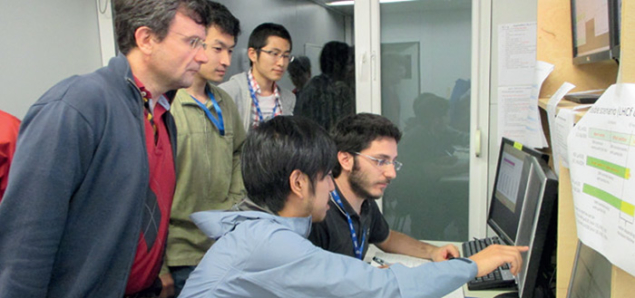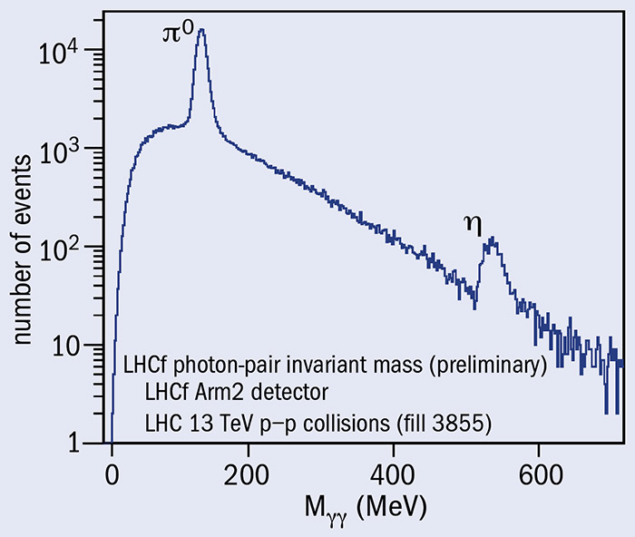Run 2 of the LHC may only just have officially begun, but the Large Hadron Collider forward (LHCf) experiment has already completed its data taking with proton–proton collisions at the new high energy of 13 TeV in the centre of mass. The experiment collected data in a special physics run carried out on 8–12 June, just after the start of Run 2.
The motivation of LHCf is to understand the hadronic interactions taking place when high-energy cosmic rays collide with the Earth’s atmosphere, producing bunches of particles known as air showers. These air showers allow the observation of primary cosmic rays with energies from 1015 eV to beyond 1020 eV. Because a collision energy of 13 TeV corresponds to the interaction of a proton with an energy of 9 × 1016 eV hitting the atmosphere, the LHC enables an excellent test of what happens at the energy of the observed air showers.

Image credit: LHCf Collaboration.
The interaction relevant to air-shower development has a large cross-section, with most of the energy going into producing particles that are emitted in the very forward direction – that is, at very small angles to the direction of the incident particle. LHCf therefore uses two detectors, Arm 1 and Arm 2, installed at 140 m on either side of the interaction point in the ATLAS experiment (CERN Courier January/February 2015 p6).
For LHCf to be able to determine the production angle of individual particles, the experiment requires beams that are more parallel than in the usual LHC collisions. In addition, the probability for more than one collision in a single bunch crossing (pile-up) must be far smaller than unity, to avoid contamination from multiple interaction events. To meet these constraints, for the special run the beams were “unsqueezed” instead of being “squeezed”, making them larger at the collision points. This involved adjusting magnets on either side of the interaction point to increase β* – the parameter that characterizes the machine optics for the squeeze – to a value of 19 m. In addition, the collisions took place either with low beam intensities or with beams offset to each other to reduce pile-up.

The first collisions for physics (“stable beams”) were provided at midnight on 10 June with very low pile-up, followed until noon on 13 June by a total of six machine fills providing various pile-up values ranging from 0.003 to 0.05. This allowed LHCf to take more than 32 hours of physics data, as scheduled.
Even with a luminosity of 1029 cm–2 s–1 – five orders of magnitude below the nominal LHC luminosity – the LHCf detectors achieved a useful data rate of > 500 Hz, recording about 15% of inelastic interactions with neutral particles of energies > 100 GeV. A preliminary analysis during the run showed the clear detection not only of π0 mesons but also of η mesons, which had not been the case with the data at the collision energy of 7 TeV in Run 1.
A highlight of the operation was collaboration with the ATLAS experiment. During the special run, trigger signals in LHCf were sent to ATLAS, which recorded data accordingly. The analyses of such common events will enable the classification of events based on the nature of processes such as diffractive dissociation and non-diffractive interactions.
The LHCf detectors were removed from the LHC tunnel on 15 June during the first technical stop of the LHC, to avoid the radiation damage that would occur with the increasingly high luminosity for Run 2.





